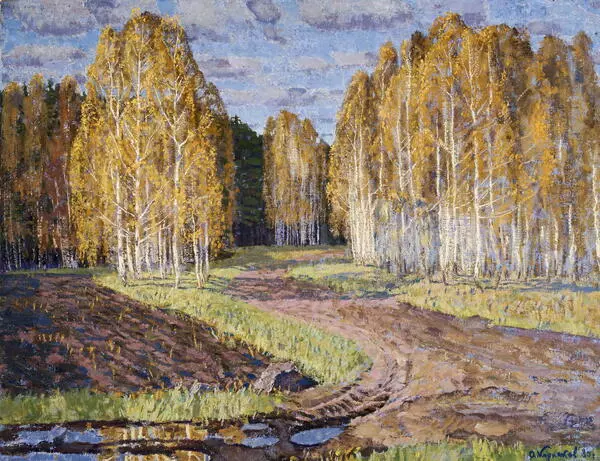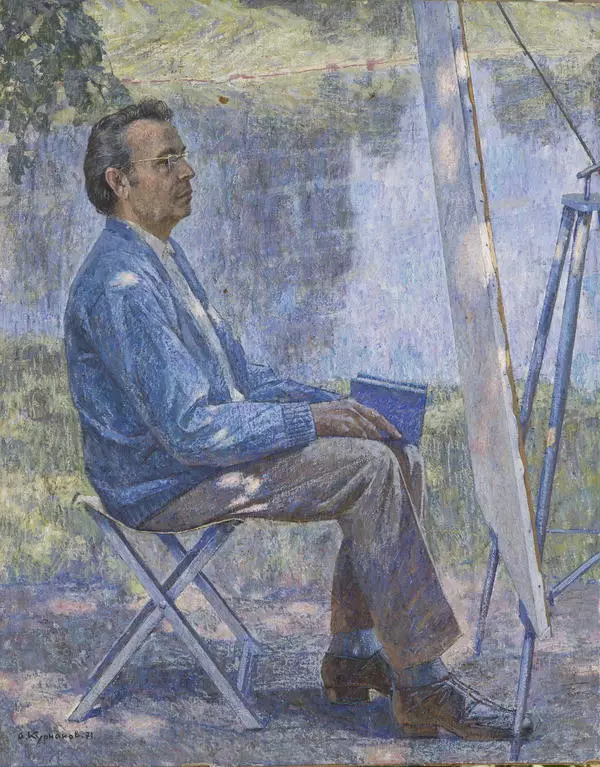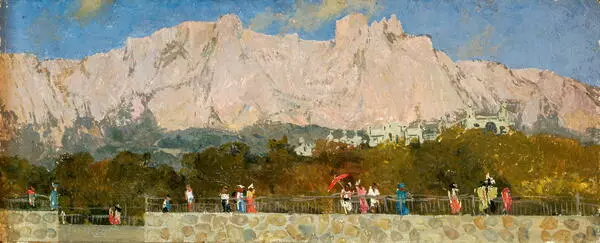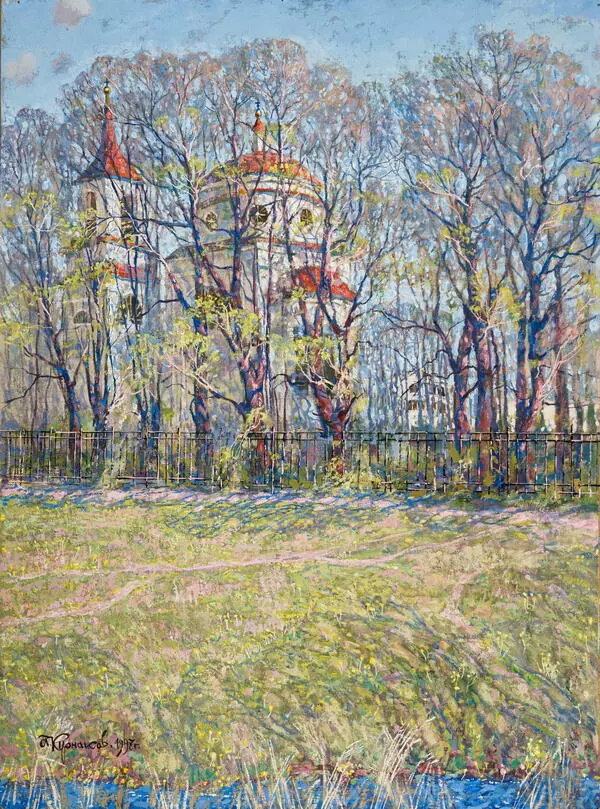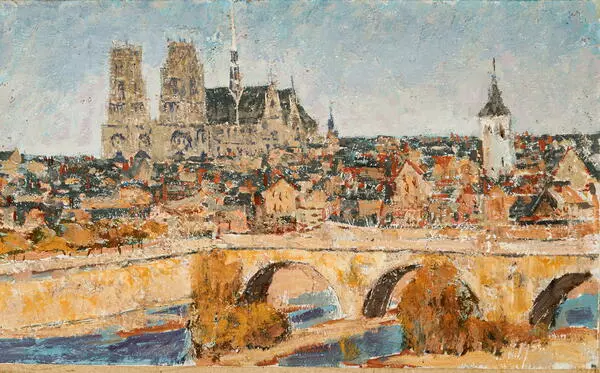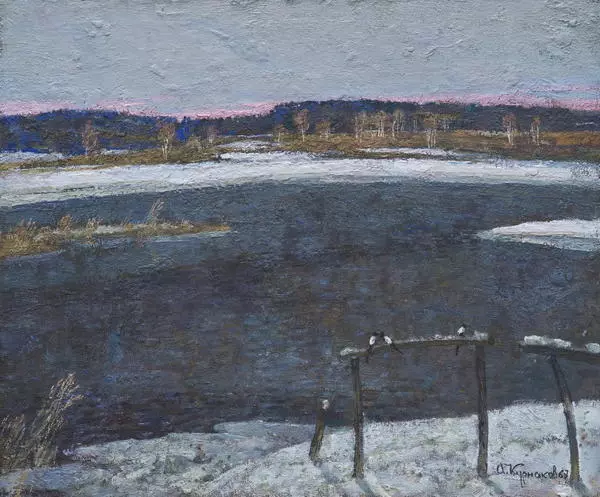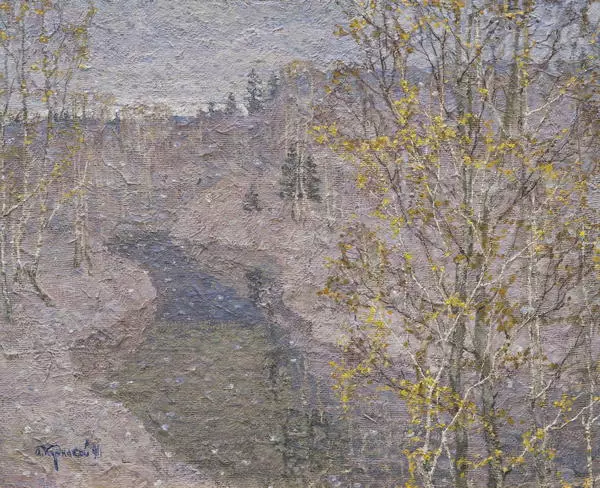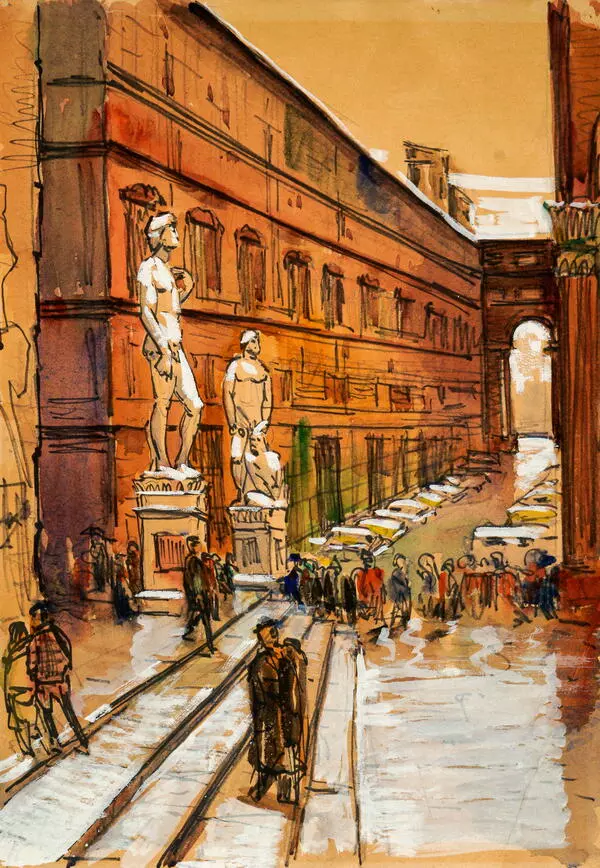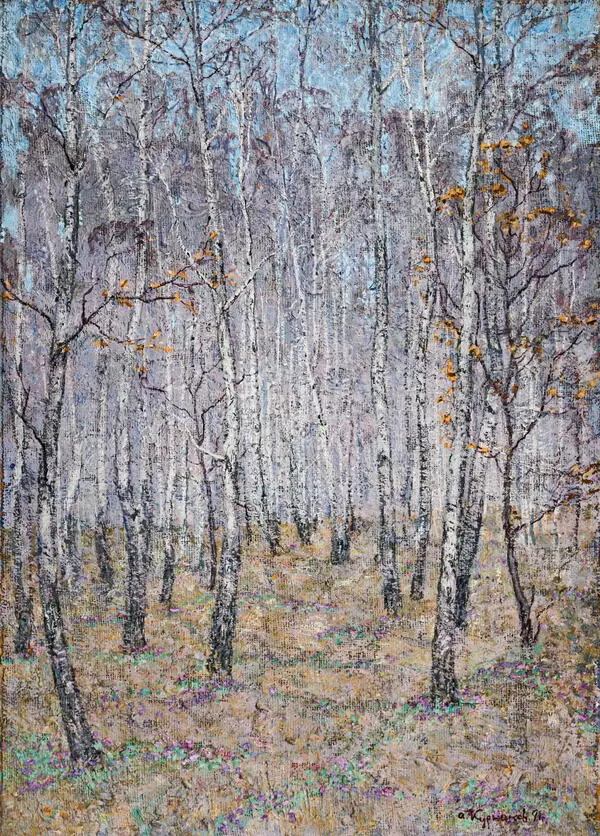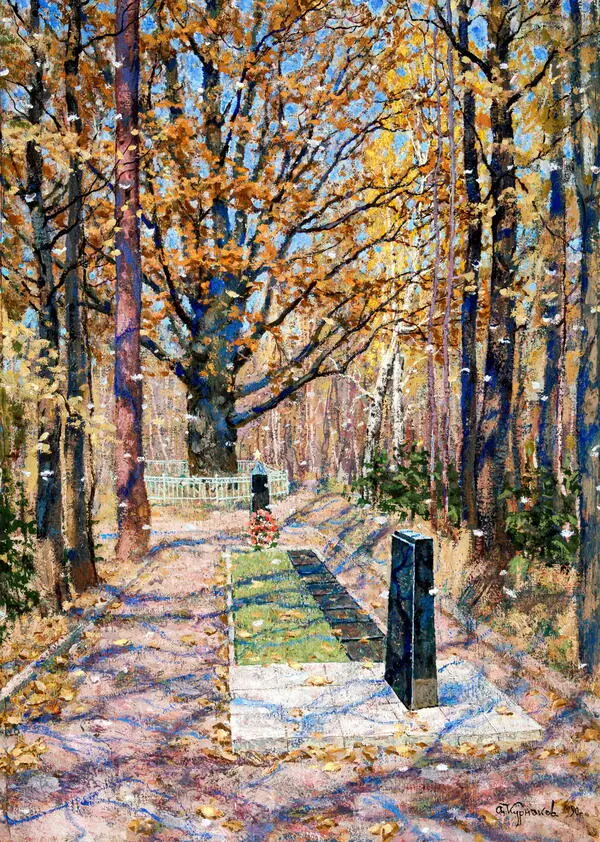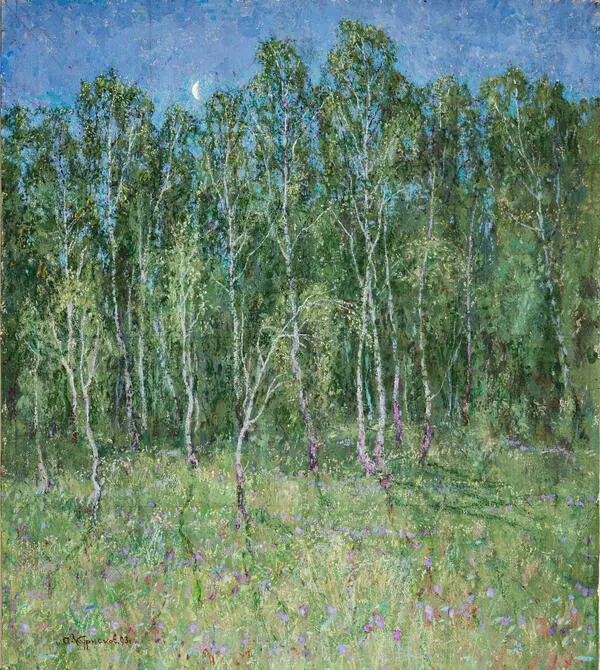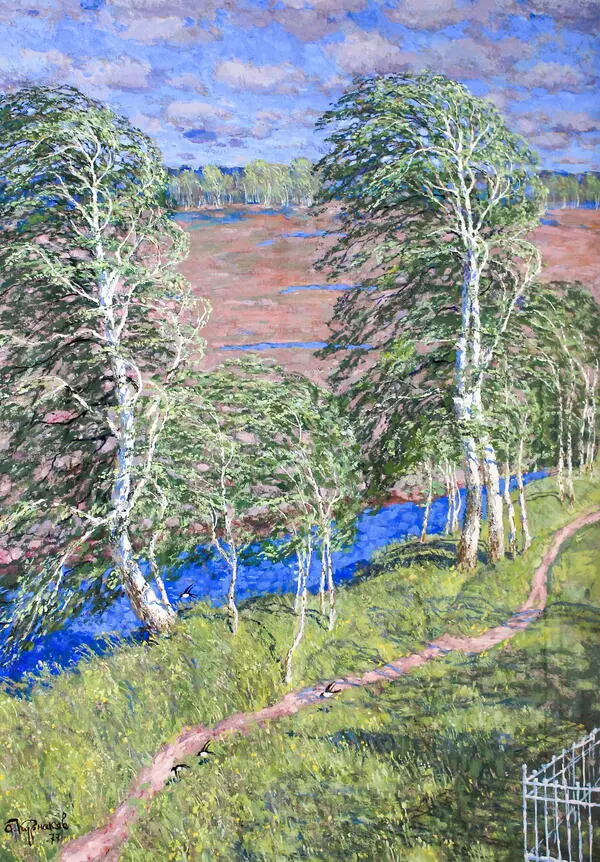In front of you is one of the ‘flower’ still lifes by artist Andrey Kurnakov. In the foreground, on the right, on the floor, there is a large metal silvery bucket, the bottom of which has been cut off by the edge of the painting. The bucket contains a large bouquet of lavender-lilac blossoming irises with long stems.
In the background, to the left of the composition’s center, there is a light-wood stool with legs ending at the edge of the canvas. It is covered with a beige and gray lace napkin reminiscent of the “Yelets lace” pattern, which smoothly descends almost to the floor. There are two vases on the stool: a small - low, spherical, blue vase expanding upward with a small green branch of a rose hip with rare white flowers; to the right of it is a tall cylinder-like crystal vase with a pattern, sparkling with large facets. It has a large bouquet of blossoming pink peonies with buds and green juicy foliage.
The background for the bucket of irises is a dark wall with brown-ocher ornament on the right. Peonies are depicted in the center and on the left against the background of a doorway with an open space overlooking the street, in which a gray structure and a green array of trees are guessed. The color of the picture is pink-lilac-purple, bright, light, joyful, ethereal.
In different countries, flowers have always been interpreted as symbols. For example, iris flowers in Japan symbolized the warrior spirit, as their leaves resemble the shape of a sword. Irises blooming on the roof of the house are a sign that a boy is growing in the house.
Peonies in Japanese prints symbolized wealth and happiness. Irises with mimosa were painted by the French artist Henri Matisse, and the Fleming Jan Brueghel the Younger painted a bouquet of irises and peonies.
In this work, Andrei Ilyich skillfully combines several genres of painting at once: still life, landscape and interior depiction, making an inextricable link between the objective world and wildlife. Using his artist skill, he conveys the difference in the textures of the objects he chose for the still life very clearly, emphasizing the diversity of the world.
One can cite the words of the artist Irina Bolotina: “Still life, more than any other genre, eludes verbal descriptions; still life should be carefully watched, examined, you should immerse in it. In this sense, still life is the key to any painting, since it teaches us to comprehend painting itself; admire the image, its beauty, strength, depth…” Andrei Ilyich Kurnakov was very fond of flowers and grew them in his country house, where this pleasing to the eye still life could be created.
The painting took part in the exhibition “Still life in the work of Oryol artists. Painting” in the Oryol Museum of Fine Arts in 2014.
In the background, to the left of the composition’s center, there is a light-wood stool with legs ending at the edge of the canvas. It is covered with a beige and gray lace napkin reminiscent of the “Yelets lace” pattern, which smoothly descends almost to the floor. There are two vases on the stool: a small - low, spherical, blue vase expanding upward with a small green branch of a rose hip with rare white flowers; to the right of it is a tall cylinder-like crystal vase with a pattern, sparkling with large facets. It has a large bouquet of blossoming pink peonies with buds and green juicy foliage.
The background for the bucket of irises is a dark wall with brown-ocher ornament on the right. Peonies are depicted in the center and on the left against the background of a doorway with an open space overlooking the street, in which a gray structure and a green array of trees are guessed. The color of the picture is pink-lilac-purple, bright, light, joyful, ethereal.
In different countries, flowers have always been interpreted as symbols. For example, iris flowers in Japan symbolized the warrior spirit, as their leaves resemble the shape of a sword. Irises blooming on the roof of the house are a sign that a boy is growing in the house.
Peonies in Japanese prints symbolized wealth and happiness. Irises with mimosa were painted by the French artist Henri Matisse, and the Fleming Jan Brueghel the Younger painted a bouquet of irises and peonies.
In this work, Andrei Ilyich skillfully combines several genres of painting at once: still life, landscape and interior depiction, making an inextricable link between the objective world and wildlife. Using his artist skill, he conveys the difference in the textures of the objects he chose for the still life very clearly, emphasizing the diversity of the world.
One can cite the words of the artist Irina Bolotina: “Still life, more than any other genre, eludes verbal descriptions; still life should be carefully watched, examined, you should immerse in it. In this sense, still life is the key to any painting, since it teaches us to comprehend painting itself; admire the image, its beauty, strength, depth…” Andrei Ilyich Kurnakov was very fond of flowers and grew them in his country house, where this pleasing to the eye still life could be created.
The painting took part in the exhibition “Still life in the work of Oryol artists. Painting” in the Oryol Museum of Fine Arts in 2014.


